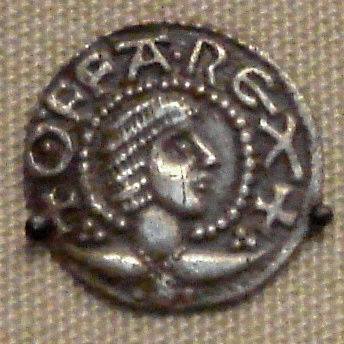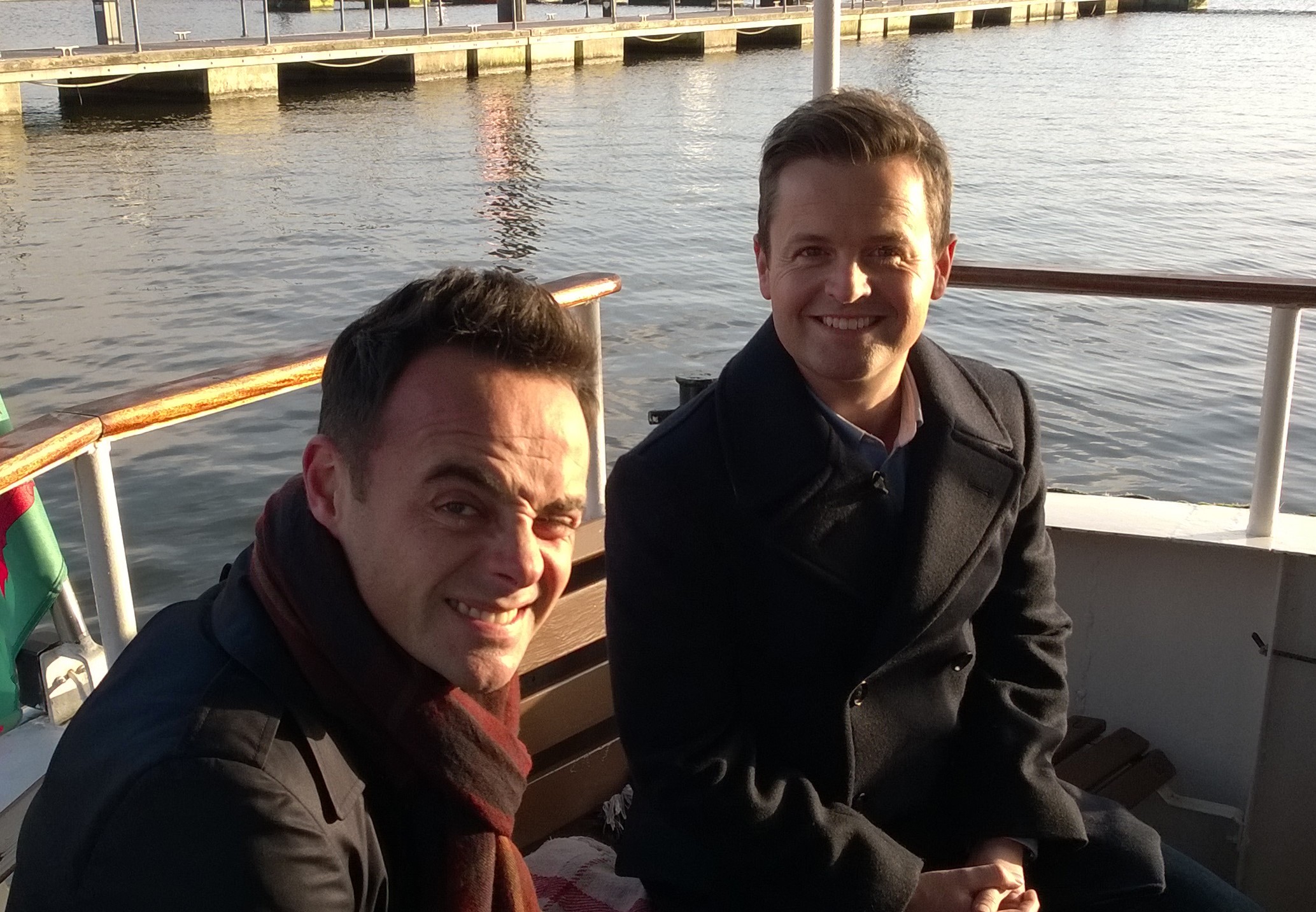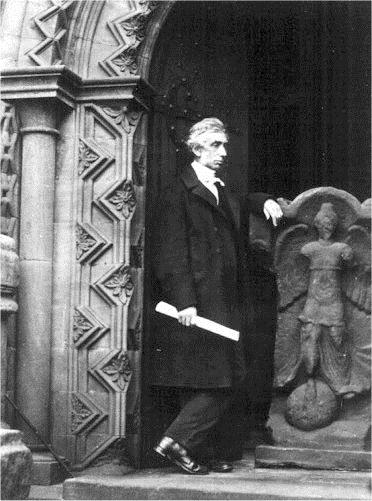|
Richard Sheale
Richard (or Rycharde) Teale, harper of Tamworth, was 16th century peddlar, and minstrel for the Stanley Family (and some say, like all pedlars, a mediocre poet). Life Richard (or Rycharde) Teale was a minstrel-retainer of the Earl of Derby about the middle of the 16th century. He was technically an itinerant vagabond, and (probably a skilful) beggar. He obtained most of his income "on the road". He was honest in so far as he preferred to pay his debts. He was married and, with the help of his wife, managed to save sixty pounds. Unfortunately in that he was stopped by highwaymen while crossing Dunsmore Heath (in Warwickshire and about 7 miles from Rugby) and his money stolen. He thought that he was safe carrying the money because of his reputation of his calling for poverty. He wrote a song to tell of this tale, and possibly collected many times more by collection from the audience’s sympathy. Before his performance he pronounced that "his patron has given him letters, f ... [...More Info...] [...Related Items...] OR: [Wikipedia] [Google] [Baidu] |
Tamworth, Staffordshire
Tamworth (, ) is a market town and borough in Staffordshire, England, north-east of Birmingham. The town borders North Warwickshire to the east and north, Lichfield to the north, south-west and west. The town takes its name from the River Tame, which flows through it. The population of Tamworth borough () was . The wider urban area had a population of 81,964. Tamworth was the principal centre of royal power of the Anglo-Saxon Kingdom of Mercia during the 8th and 9th centuries. It hosts a simple but elevated 12th century castle, a well-preserved medieval church (the Church of St Editha) and a Moat House. Tamworth was historically divided between Warwickshire and Staffordshire until 1889, when the town was placed entirely in Staffordshire. The town's industries include logistics, engineering, clothing, brick, tile and paper manufacture. Until 2001 one of its factories was Reliant, which produced the Reliant Robin three-wheeler car and the Reliant Scimitar sports car. The ... [...More Info...] [...Related Items...] OR: [Wikipedia] [Google] [Baidu] |
Earl Of Derby
Earl of Derby ( ) is a title in the Peerage of England. The title was first adopted by Robert de Ferrers, 1st Earl of Derby, under a creation of 1139. It continued with the Ferrers family until the 6th Earl forfeited his property toward the end of the reign of Henry III and died in 1279. Most of the Ferrers property and (by a creation in 1337) the Derby title were then held by the family of Henry III. The title merged in the Crown upon Henry IV's accession to the throne in 1399. The title was created again, this time for the Stanley family, in 1485. Lord Derby's subsidiary titles are Baron Stanley of Bickerstaffe in the County Palatine of Lancaster (created 1832), and Baron Stanley of Preston in the County Palatine of Lancaster (1886). The courtesy title of the heir apparent is Lord Stanley. The 1st to 5th Earls also held an earlier Barony of Stanley, created for the 1st Earl's father in 1456 and currently abeyant; the 2nd to 5th Earls held the Barony of Strange created i ... [...More Info...] [...Related Items...] OR: [Wikipedia] [Google] [Baidu] |
Warwickshire
Warwickshire (; abbreviated Warks) is a county in the West Midlands region of England. The county town is Warwick, and the largest town is Nuneaton. The county is famous for being the birthplace of William Shakespeare at Stratford-upon-Avon and Victorian novelist George Eliot, (born Mary Ann Evans), at Nuneaton. Other significant towns include Rugby, Leamington Spa, Bedworth, Kenilworth and Atherstone. The county offers a mix of historic towns and large rural areas. It is a popular destination for international and domestic tourists to explore both medieval and more recent history. The county is divided into five districts of North Warwickshire, Nuneaton and Bedworth, Rugby, Warwick and Stratford-on-Avon. The current county boundaries were set in 1974 by the Local Government Act 1972. The historic county boundaries included Coventry, Sutton Coldfield and Solihull, as well as much of Birmingham and Tamworth. Geography Warwickshire is bordered by Leicestershire to the nort ... [...More Info...] [...Related Items...] OR: [Wikipedia] [Google] [Baidu] |
Rugby, Warwickshire
Rugby is a market town in eastern Warwickshire, England, close to the River Avon. In the 2021 census its population was 78,125, making it the second-largest town in Warwickshire. It is the main settlement within the larger Borough of Rugby which has a population of 114,400 (2021). Rugby is situated on the eastern edge of Warwickshire, near to the borders with Leicestershire and Northamptonshire. Rugby is the most easterly town within the West Midlands region, with the nearby county borders also marking the regional boundary with the East Midlands. It is north of London, east-southeast of Birmingham, east of Coventry, north-west of Northampton, and south-southwest of Leicester. Rugby became a market town in 1255, but remained a small and fairly unimportant town until the 19th century. In 1567 Rugby School was founded as a grammar school for local boys, but by the 18th century it had gained a national reputation as a public school. The school is the birthplace of Rugby foo ... [...More Info...] [...Related Items...] OR: [Wikipedia] [Google] [Baidu] |
Geordie Dialect Words
Geordie () is a nickname for a person from the Tyneside area of North East England, and the dialect used by its inhabitants, also known in linguistics as Tyneside English or Newcastle English. There are different definitions of what constitutes a Geordie. The term is used and has been historically used to refer to the people of the North East. A Geordie can also specifically be a native of Tyneside (especially Newcastle upon Tyne) and the surrounding areas. Not everyone from the North East of England identifies as a Geordie. Geordie is a continuation and development of the language spoken by Anglo-Saxon settlers, initially employed by the ancient Brythons to fight the Pictish invaders after the end of Roman rule in Britain in the 5th century. The Angles, Saxons and Jutes who arrived became ascendant politically and culturally over the native British through subsequent migration from tribal homelands along the North Sea coast of mainland Europe. The Anglo-Saxon kingdoms that eme ... [...More Info...] [...Related Items...] OR: [Wikipedia] [Google] [Baidu] |
John Collingwood Bruce
The Reverend John Collingwood Bruce, FSA (1805–5 April 1892) was an English nonconformist minister and schoolmaster, known as a historian of Tyneside and author. He co-operated with John Stokoe in compiling the major song collection '' Northumbrian Minstrelsy'' published in 1882 Early life The eldest son of John Bruce of Newcastle, he was educated at the Percy Street Academy, a well-known school in Newcastle kept by his father, and afterwards at Mill Hill School, Middlesex. He entered Glasgow University in 1821, graduated M.A. in 1826, and became hon. LL.D. in 1853. In early life, Bruce studied for the Presbyterian ministry, but never sought a call from any congregation. In 1831, he began to assist in the management of his father's school, of which he became sole proprietor in 1834, when his father died. He retired from the school, after a successful career, in 1863. Historical interests Bruce's main interest was in the history of Britain, in particular North East En ... [...More Info...] [...Related Items...] OR: [Wikipedia] [Google] [Baidu] |
John Stokoe (author)
John Stokoe was a 19th-century Tyneside (and maybe South Shields) author and historian. He co-operated with the author John Collingwood Bruce in compiling the hugely important “ Northumbrian Minstrelsy” published in 1882. Details Stokoe lived is South Shields (according to edition of “The North-Country Garland of Song” appearing in the Monthly Chronicle of January 1891. In editing the “ Northumbrian Minstralry” he co-operated with fellow author John Collingwood Bruce. The article Music of Northumbria, credits John Stokoe with copying out, in 1950, some of the tunes from John Smith’s tunebook of 1750, a book now long lost, and the pair creating this comprehensive collection of old Northern Songs. The work was on behalf of, and published by, Newcastle Society of Antiquaries. According to Thomas Allan in his Illustrated Edition of Tyneside Songs and Readings (page1), “ (Weel May) The Keel Row”, described by many as the Tyneside National Anthem, was a popular ... [...More Info...] [...Related Items...] OR: [Wikipedia] [Google] [Baidu] |
Northumbrian Minstrelry By Bruce And Stokoe, 1882
''Northumbrian Minstrelsy'' is a book of 18th and 19th century North East of England folk songs and pipe music, intended to be a lasting historical record. The book was edited by John Stokoe and the Rev John Collingwood Bruce LL.D., F.S.A., and published by and on behalf of the Society of Antiquaries of Newcastle upon Tyne in 1882. It was reprinted in 1965 by Folklore Associates, Hatboro, Pennsyslvania, with a foreword by A. L. Lloyd. Details ''Northumbrian Minstrelsy'' was written with the intention of providing a historical record of some of the North Country songs and music. "A book for the collection and preservation of the old music and poetry of the North of England" was what Algernon Percy, 4th Duke of Northumberland had suggested. The book is divided into two sections; the first giving the lyrics (with some music) of local, now historical songs, and the second part giving the music to many Northumbrian smallpipe tunes with very few lyrics. The book was edited by John St ... [...More Info...] [...Related Items...] OR: [Wikipedia] [Google] [Baidu] |
Folk Music Of England
The folk music of England is a tradition-based music which has existed since the later medieval period. It is often contrasted with courtly, classical and later commercial music. Folk music traditionally was preserved and passed on orally within communities, but print and subsequently audio recordings have since become the primary means of transmission. The term is used to refer both to English traditional music and music composed or delivered in a traditional style. There are distinct regional and local variations in content and style, particularly in areas more removed from the most prominent English cities, as in Northumbria, or the West Country. Cultural interchange and processes of migration mean that English folk music, although in many ways distinctive, has significant crossovers with the music of Scotland. When English communities migrated to the United States, Canada and Australia, they brought their folk traditions with them, and many of the songs were preserved by ... [...More Info...] [...Related Items...] OR: [Wikipedia] [Google] [Baidu] |
English Songwriters
English usually refers to: * English language * English people English may also refer to: Peoples, culture, and language * ''English'', an adjective for something of, from, or related to England ** English national identity, an identity and common culture ** English language in England, a variant of the English language spoken in England * English languages (other) * English studies, the study of English language and literature * ''English'', an Amish term for non-Amish, regardless of ethnicity Individuals * English (surname), a list of notable people with the surname ''English'' * People with the given name ** English McConnell (1882–1928), Irish footballer ** English Fisher (1928–2011), American boxing coach ** English Gardner (b. 1992), American track and field sprinter Places United States * English, Indiana, a town * English, Kentucky, an unincorporated community * English, Brazoria County, Texas, an unincorporated community * Engli ... [...More Info...] [...Related Items...] OR: [Wikipedia] [Google] [Baidu] |
People From Tamworth, Staffordshire
A person ( : people) is a being that has certain capacities or attributes such as reason, morality, consciousness or self-consciousness, and being a part of a culturally established form of social relations such as kinship, ownership of property, or legal responsibility. The defining features of personhood and, consequently, what makes a person count as a person, differ widely among cultures and contexts. In addition to the question of personhood, of what makes a being count as a person to begin with, there are further questions about personal identity and self: both about what makes any particular person that particular person instead of another, and about what makes a person at one time the same person as they were or will be at another time despite any intervening changes. The plural form "people" is often used to refer to an entire nation or ethnic group (as in "a people"), and this was the original meaning of the word; it subsequently acquired its use as a plural form of per ... [...More Info...] [...Related Items...] OR: [Wikipedia] [Google] [Baidu] |




.png)
_1938.jpg)